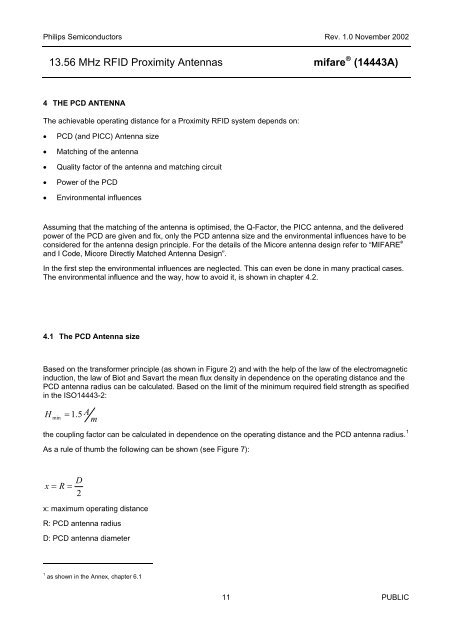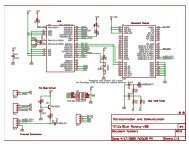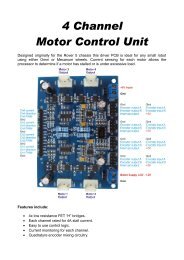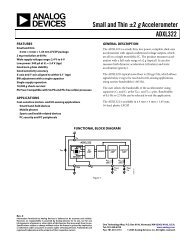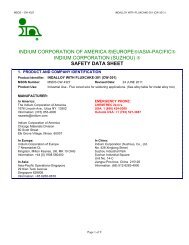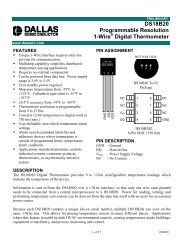AN78010 - NXP.com
AN78010 - NXP.com
AN78010 - NXP.com
You also want an ePaper? Increase the reach of your titles
YUMPU automatically turns print PDFs into web optimized ePapers that Google loves.
Philips Semiconductors Rev. 1.0 November 200213.56 MHz RFID Proximity Antennas mifare ® (14443A)4 THE PCD ANTENNAThe achievable operating distance for a Proximity RFID system depends on:• PCD (and PICC) Antenna size• Matching of the antenna• Quality factor of the antenna and matching circuit• Power of the PCD• Environmental influencesAssuming that the matching of the antenna is optimised, the Q-Factor, the PICC antenna, and the deliveredpower of the PCD are given and fix, only the PCD antenna size and the environmental influences have to beconsidered for the antenna design principle. For the details of the Micore antenna design refer to “MIFARE ®and I Code, Micore Directly Matched Antenna Design”.In the first step the environmental influences are neglected. This can even be done in many practical cases.The environmental influence and the way, how to avoid it, is shown in chapter 4.2.4.1 The PCD Antenna sizeBased on the transformer principle (as shown in Figure 2) and with the help of the law of the electromagneticinduction, the law of Biot and Savart the mean flux density in dependence on the operating distance and thePCD antenna radius can be calculated. Based on the limit of the minimum required field strength as specifiedin the ISO14443-2:H = 1. 5 Aminmthe coupling factor can be calculated in dependence on the operating distance and the PCD antenna radius. 1As a rule of thumb the following can be shown (see Figure 7):x = R =D2x: maximum operating distanceR: PCD antenna radiusD: PCD antenna diameter1as shown in the Annex, chapter 6.111 PUBLIC


